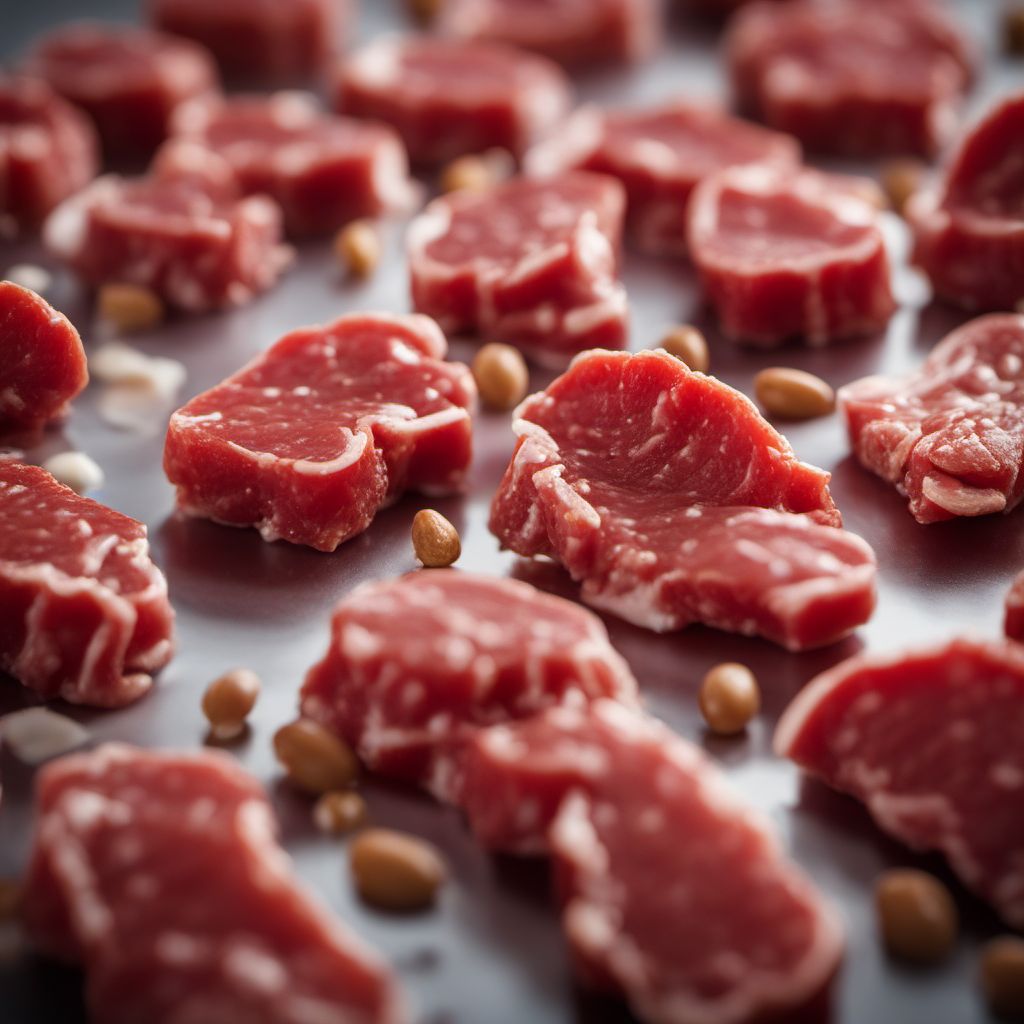
Ingredient
Dog meat
Canine Cuisine: Exploring the World of Dog Meat
Dog meat refers to the flesh and organs of dogs that are consumed as food. The taste, texture, and appearance of dog meat can vary depending on the breed, age, and preparation method. It is often described as having a rich, gamey flavor with a slightly sweet undertone. The texture can range from tender to chewy, depending on the cut and cooking technique. In terms of appearance, dog meat can resemble other types of meat, such as beef or pork, but may have a darker color and leaner texture.
Origins and history
The consumption of dog meat dates back thousands of years and has cultural significance in certain regions, particularly in East Asia. It has been a part of traditional cuisines in countries like China, South Korea, Vietnam, and parts of Africa. Historically, dog meat was consumed for its perceived health benefits and as a source of protein in regions where other meat sources were scarce. However, it is important to note that attitudes towards consuming dog meat vary widely across different cultures and societies.
Nutritional information
Dog meat is a good source of protein, vitamins, and minerals. It is relatively low in fat and calories compared to other meats. However, it is important to note that the nutritional composition can vary depending on the breed, age, and preparation method.
Allergens
Dog meat may cause allergic reactions in individuals with specific allergies to meat proteins. It is important to exercise caution and consult with a healthcare professional if you have any concerns or known allergies.
How to select
When purchasing dog meat, it is essential to consider the source and ensure that it comes from reputable suppliers who adhere to ethical and legal standards. Look for fresh meat that is properly stored and handled. If purchasing from a market or butcher, choose cuts that appear fresh, have a vibrant color, and are free from any unpleasant odors.
Storage recommendations
Fresh dog meat should be stored in the refrigerator at temperatures below 40°F (4°C). It is best to consume it within a few days of purchase to maintain its freshness and quality. If you need to store it for a longer period, freezing is recommended. Properly wrapped and sealed, dog meat can be stored in the freezer for up to three months.
How to produce
Producing dog meat requires specialized knowledge and facilities. It involves raising and slaughtering dogs for consumption, which may be subject to legal regulations and cultural considerations. It is not recommended for amateurs to attempt producing dog meat.
Preparation tips
Dog meat can be prepared using various cooking techniques, including grilling, stir-frying, boiling, or stewing. It is important to ensure that the meat is cooked thoroughly to eliminate any potential health risks. Marinating the meat can help enhance its flavor and tenderize it. It is often used in traditional dishes such as dog meat soup, dog meat hot pot, or dog meat barbecue.
Substitutions
Due to ethical concerns and cultural differences, dog meat is not commonly substituted with other meats. It is important to respect cultural practices and dietary preferences when exploring alternative ingredients.
Culinary uses
Dog meat is primarily used in traditional dishes in certain cultures, such as dog meat soup in South Korea or dog meat hot pot in China. It is often incorporated into stews, stir-fries, or grilled dishes. However, it is important to note that the consumption of dog meat is controversial and not widely accepted in many parts of the world.
Availability
Dog meat is commonly available and consumed in certain regions of East Asia, including China, South Korea, and Vietnam. However, it is important to note that the legality and cultural acceptance of consuming dog meat vary within these countries.
More ingredients from this category » Browse all

Llama or lama fresh meat
"The Exotic Delicacy: Discover the Unique Flavors of Llama Meat"

Marine mammals meat
Delicacy from the Deep Blue

Mixed pork and mutton/lamb fresh meat
The Perfect Blend: Pork and Lamb Combination

Bovine and pig fresh meat
The Butcher's Bounty: Exploring Fresh Bovine and Pig Meat

Rabbit fresh meat
The Versatile Bunny

Rat meat
"The Unconventional Delicacy: Exploring the World of Rat Meat"

Moufflon fresh meat
The Wild Delicacy: Exploring the Flavors of Moufflon Fresh Meat

Sheep fresh meat
The Savory Delight of Sheep Fresh Meat

Deer fresh meat
"The Wild Delicacy: Exploring the Rich Flavors of Deer Fresh Meat"

Mixed beef and mutton/lamb fresh meat
Savory Meat Medley

Bovine fresh meat
The Prime Cut: Bovine Fresh Meat

Kangaroo fresh meat
The Lean and Sustainable Protein